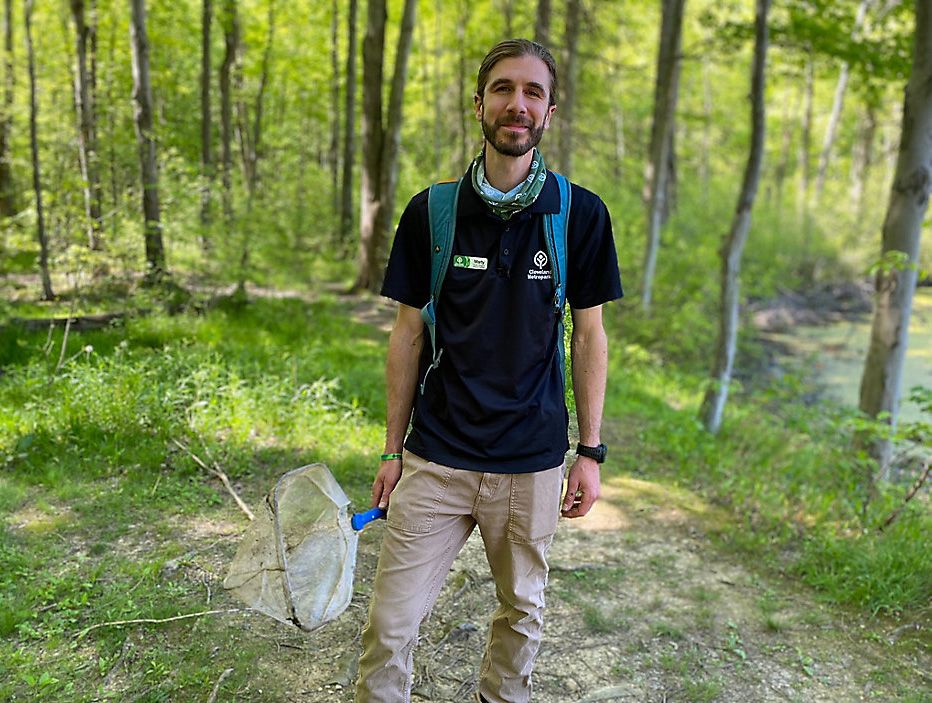CLEVELAND — Marty Calabrese is curious.
“I have to know who’s making that sound, who left those tracks. That is my love for nature. That’s what brings me outside and keeps me outside," he said. "It’s the wonderment."
That makes his job as a naturalist at the Cleveland Metroparks a dream.
“I like to explore every nook and cranny,” he said.
While he’s more of a “bird guy" than a "bug guy," the Cleveland native knows midges are a hot topic this time of year.
“So, I’m here to set the record straight and midges they should not be considered a pest. They do not bite. They’re not dangerous. In fact, midges are beneficial,” he explained.
Midges are a food source for both aquatic wildlife and birds.
“So it’s all synchronous,” he said.
Calabrese said midges develop similarly to how tadpoles become frogs.
“They like the midges go through metamorphosis, but it’s quicker,” he explained.
I want to see your midge pics! 🦟@clevemetroparks @naturalistMarty considers himself more of a “bird guy” than a “bug guy” but he knows all of the ins & outs of these “little guys.” Tag along on our nature walk to learn more about the benefits of the insects on @SpectrumNews1OH pic.twitter.com/NUR7TykArd
— Micaela Marshall (@MMarshallTV) May 19, 2021
Once Lake Erie and other inland bodies of water warm up to 60 degrees, the midges come out in mass.
“Their whole point in adult life is to reproduce,” said Calabrese.
Calabrese said the flies can tolerate polluted water with low oxygen conditions.
“This doesn’t mean that they’re not also present in clean and pristine waters. So, it is a wrong assessment to think that if you see midges the water is dirty,” said Calabrese.
Midges emerge from water in and around Cleveland in the spring and the fall. The life cycle fascinates naturalists like Calabrese.
“From an aquatic ecosystem on to land into a terrestrial ecosystem, the energy is crossing a border. That is a phenomenon that is so hard to even understand and fathom the complexity of that. The interconnectedness of that,” he said.
The adult midges you see around now only live for a few days. Calabrese estimates they’ll all be gone by the beginning of June and then northern Ohioans have mayfly season to look forward to.

What is a midge?
"Midges are aquatic insects and they are not dangerous. In fact, they are quite beneficial to our freshwater ecosystems. They help clean the lake bottom and move tiny bits of nutrition up the food chain while becoming food themselves for fish, larval and adult amphibians, turtles, birds and a myriad of other insects. Midges are biologically classified as flies. As such, they undergo major body changes as they grow."
When is midge season?
"When thinking about the timing of midge season, it's important to understand that the majority of their metamorphosis takes place underwater, i.e., egg, larva, and pupa. Spring is precisely the time of year that warmer air will drive Lake Erie water temperatures to a tolerable range and this will trigger the midges to emerge from their pupal encasement directly from the water. Imagine a butterfly ripping itself from the confines of its pupal encasement, the chrysalis. That is what's happening now with midges. At this point we see the adults flying about the sky near bodies of water and in particular, anywhere within miles of Lake Erie. Northeast Ohio is a hot zone for midges."



